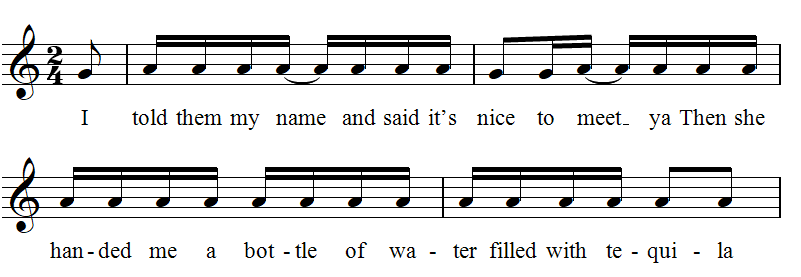Ed Sheeran's Storytelling Style and where it comes from
by David Bruce
This essay was written by composer David Bruce, founder of 8notes.com for the following YouTube video. Subscribe to David's channel here
to follow new video essays on a wide range of musical topics.Until recently storytelling in popular music had gone entirely out of fashion.

It's last major incarnation was in rap. It's actually rather surprising that rap took so long to discover story telling, which only happened towards the end of the 1980s. The godfather of the modern story rap is Slick Rick whose debut album, The Great Adventures of Slick Rick, introduced mainstream hip-hop to long-form storytelling.
Since then it's become almost compulsory for every rap album to have at least one story number and some artists, including Eminem made the story rap their main form of expression.
Eminem was Ed Sheeran's introduction to rap, after his dad bought him the Marshall Mathers LP when he was 9 years old - obviously not being fully aware of the subject matter of murder abuse and violience which must have been pretty shocking to a 9 year old. But Ed was clearly hooked. He said "I learned every word back to front by the time I was 10"
Growing up in small town Suffolk, Sheeran wisely avoided trying to mimick the darkness and violience of Eminem, and although his early raps were less about story-telling, and more about a jokey grand-standing of his talents, Sheeran soon found his niche, by rapping instead about the traditional pop subjects of love, longing, and having a good time, but using rap to fill out the detail of the story.
You can hear the influence of rap throughout his work, and not just in the rapping sections. Take the verse of a song like Drunk.
"There may be other people like us,
you see the flicker of the clipper when they light up"
you see the flicker of the clipper when they light up"
If you look at the first line, a more typical response would be to keep roughly the same number of syllables in the second line, something like this
There may be other people like us,
you see the flicker when they light up
you see the flicker when they light up
But Sheeran throws in this rapid fire phrase - the flicker of the clipper. A fast show-off rhyme within the middle of the line, straight out of rap.
The excitement of these tightly packed, rhythmical and multi-rhyming phrases is one of the great pleasures of sheeran's music
Occasionally the words - the story - seem too important to Sheeran and burst out of their metric structure. Have a look at this example from 'Sing'

You can see that the phrasing of the words doesn't really fit into the bar. The word water has a long-short stress but here we have the weak syllable 'ter' on the downbeat. It's only thanks to Sheeran's effortless performance that it comes across sounding actually pretty cool, but try strumming the chords in time while saying that line and you'll see how hard it really is!
Melody Lines
It's a similar story with the melody lines. The vast majority of Sheeran's melody lines stay within a tiny range of three or four notes
- a speaking range, which allows him to have a kind of conversational style of singing. In many of his songs, Drunk, Photograph, Castle on the Hill, A Team as well as songs he wrote like Love Yourself, which he wrote for Justin Beiber, or Little Things for One Direction, the melodies use almost exclusively the 1st, 2nd, 3rd and 5th notes of the major scale.
'Little Things' again shows how he lets the words run over the barline.

He's happy to squash the words 'up to' into the first beat of the next bar. This is quite characteristic of his writing and I think again, shows the story teller at work. Putting priority to the words even if they don't fully scan in a traditional way.
The more melodic style of storytelling comes I think directly from the likes of Van Morrison who in songs like 'Stoned Me', 'Crazy Love' and others use similar 4 - note melodies to tell a story.
So by fusing the melodic story telling styles of Van Morrison and other folk balladeers, with the fast paced story telling of rap, Sheeran has brought the art of story telling back to center stage, telling stories of love, loss, longing and memory, that have resonated with people around the world.